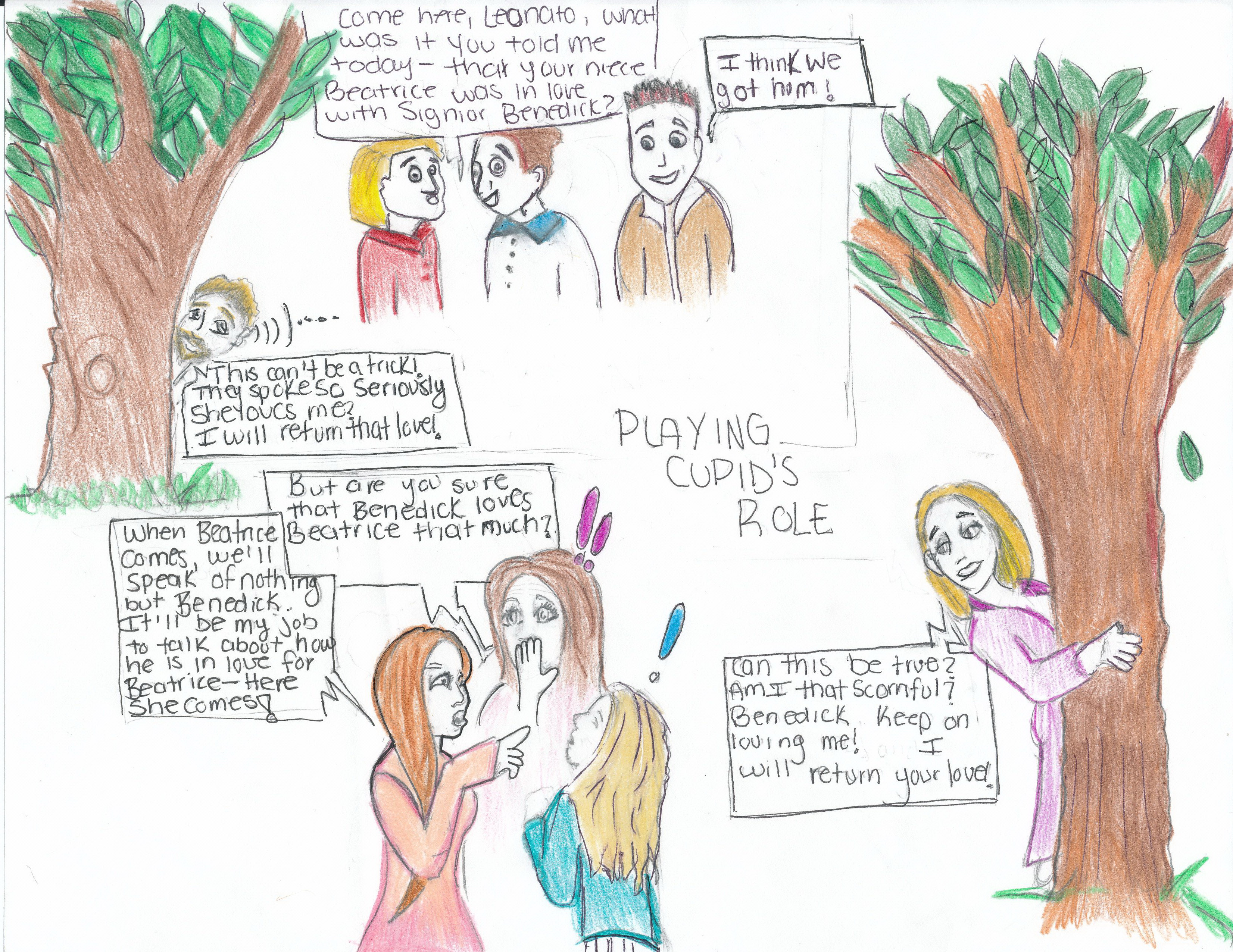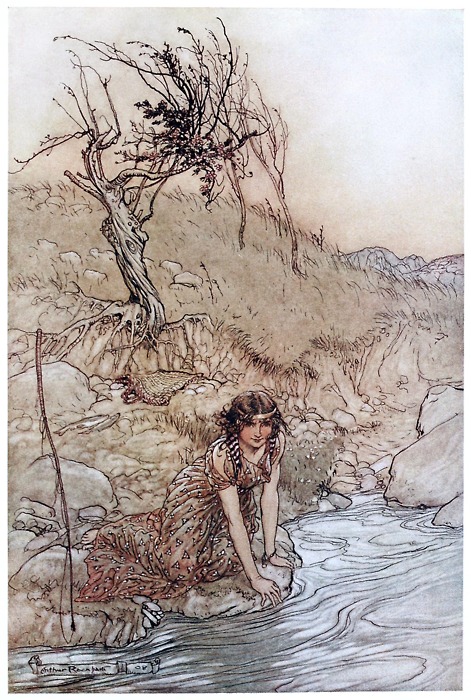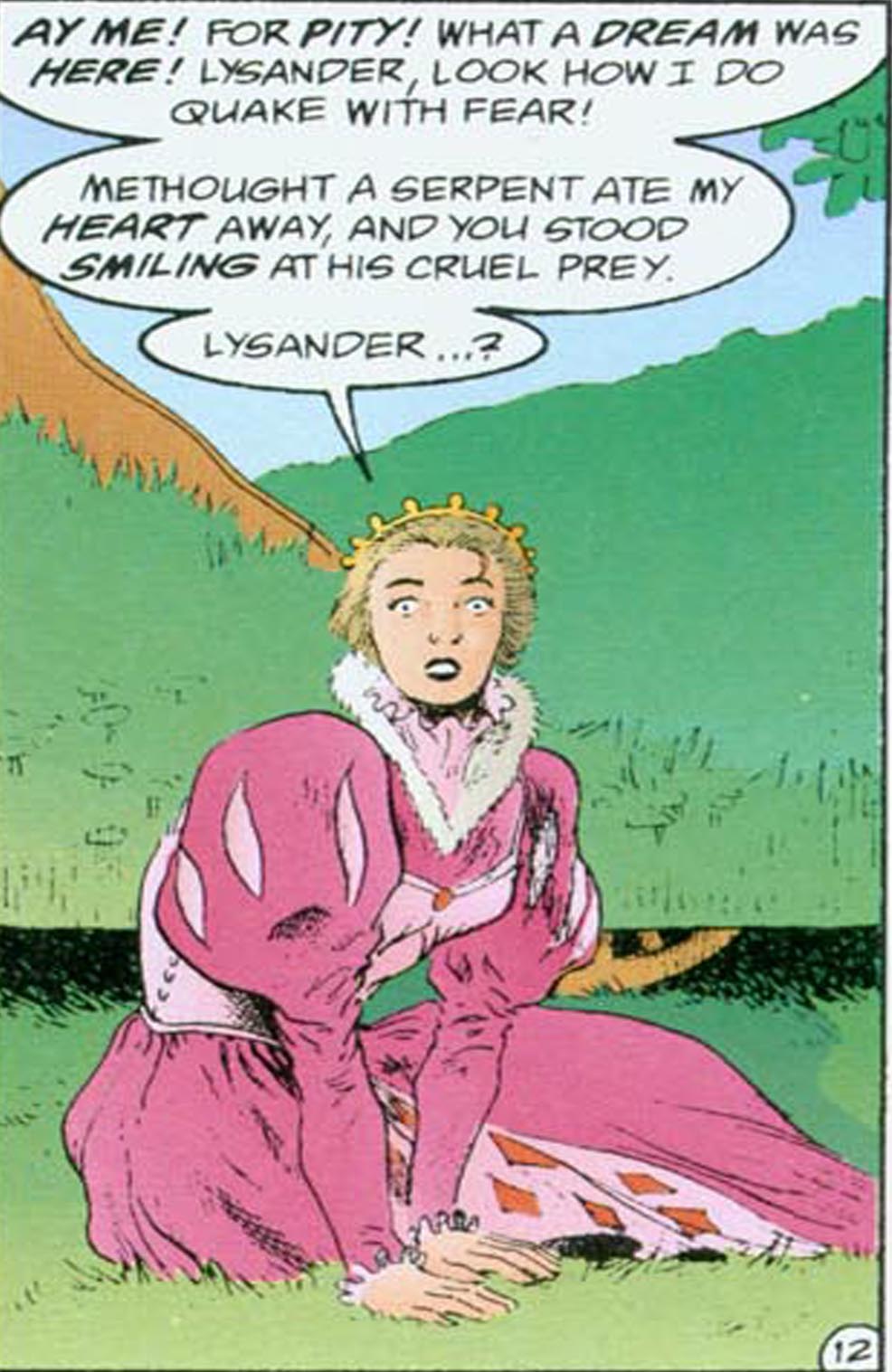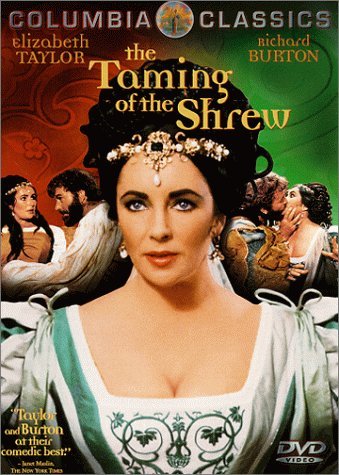

GIF stands for Graphics Interchange Format and is a bitmap image format that was introduced by CompuServe in 1987 and has since come into widespread usage on the World Wide Web due to its wide support and portability. GIFs can be used for small animations and low-resolution film clips. They are great ways to put still pictures together and make a short video or screen shot. For me, gifs are usually supposed to be comical, or a piece of creative art. The order of the pictures and the way they change makes a gif different then just pictures printed out on a sheet of paper. The sequence of the pictures plays a significant role creating a short message, an action, or something funny depending on the caption as well, or just making an extremely short "film." In the GIF I created, I show Katherine from the play The Taming of The Shrew screaming at Petruchio, the man who set out to tame the obnoxious Katherine. He is forceful and kisses her without her permission. The third picture in the GIF shows them calmly sitting there after all that has happened, representing that she has finally been tamed.
In this course so far, we have only read and discussed Shakespeare's plays. Therefore, I decided to look into Shakespeare's Sonnets, the types of poems he was also well-known for writing, in order to expand my in -depth analysis of Shakespeare's work. Shakespeare's Sonnets were published in 1609 and were a compilation of 154 of these poems. Sonnets are structured in a very unique way unlike other poems. They are written in iambic pentameter, meaning lines with ten syllables long, starting with an unstressed syllable followed by a stressed one. They consist of 14 lines ( 3 quatrains and a couplet) and have a rhyme scheme of ababcdcdefefgg. Mostly all of Shakespeare's poems touch upon the subject of love, however, I tried to write my own Sonnet about a bit different topic. It's called Hospital, enjoy:
Hospital An infant's cry pierces my ears as I Walk through the hospital's miserable hall. The cries, the stench, the unseen germs I feel crawling up my skin and on each wall. The boy in a Pokemon shirt makes me cringe. The blistering blaze consumed him from the core Even his hairs and eyebrows have been singed. Everything else in here I also abhor. My feet finally reach room 204 A burst of cold chills runs through my blood stream. Strapped down with wires; I rather gaze at the floor. Daddy's heart pumps but his mind is a dream. The man in all white says he'll be okay I sit, wait, and recall the times we use to play.
This Writing thru Media course has taught me a versatile amount of things: from learning how to make my own website, to understanding Shakespeare on a deeper level. I am definitely not a technology savvy person, so when I first heard we will be making our own websites; I admit I was a little nervous. However, learning all the different HTML codes was actually really amusing and I had to push myself to achieve our assignments that were given. It is a great useful tool for the future for making and designing websites to either create a business or have a better opportunity at getting a job. I feel so accomplished that I created a whole website by typing in my own HTML codes rather than using a program that aids in making websites. I know how to make my own lists, display pictures, use different fonts and backgrounds, and create links to other pages among many other things.
Besides learning how to make our own websites, I learned about many of the Shakespeare plays. In high school, I had only read Romeo and Juliet and a couple of his sonnets, so I wasn't well rounded in these classics. Honestly, I never liked reading Shakespeare because his language was too challenging for me. After I joined this class, I decided to take a challenge and try to read and understand the different puns and other humor Shakespeare included into his romantic comedies such as Taming of the Shrew and Much Ado About Nothing. For our first reading I used the No Fear Shakespeare help on Sparknotes to understand the story better. Eventually, I was able to read some of his work without Sparknotes, like A Midsummer Night's Dream. In general, reading and discussing these plays in class just made me more knowledgeable in the classics that everyone with an education should know. The more I know in literature the easier it is to grasp other things especially when reading allusions and references in other works.
Just last week I was walking through the Plaza of Americas, and there were student on the grass performing a play. After hearing just one line, I immediately knew they were performing a Midsummer Night's Dream. Knowing what play they were performing made me proud of myself and very thankful to this class. If this happened to me last semester I would have been clueless on what was going on and would have kept on walking.
Additionally, since I was previously unaware of most of the Shakespeare plays we read this semester, I had not realized how much impact Shakespeare has had on our modern world in media and other means. For example, I had seen the movie "10 Things I Hate About You" plenty of times, but I had no idea it was adapted from the play Taming of the Shrew, since I had never even heard of that play before. Watching that movie among a lot of other adaptations made me see our modern media in a different and better way. This class transformed me from knowing zilch about Shakespeare and his works to having a common knowledge on some of his works and how they were transformed to the everyday media I see today.

This comic that I hand-drew is taken from a scene from Shakespeare's play Much Ado About Nothing. This comic represents how the characters in the story play the role of Cupid and get two witty and scornful characters, Beatrice and Benedick, to fall in love. They do it without Cupid's arrow, but simply with the power of "gossip" and eavesdropping. The top panel in the comic summarizes Act 2 Scene 3 where Leonato, Don Pedro, and Claudio play a trick on Benedick by pretending Hero (Beatrice's niece) had told them that Beatrice is in love with him. They do an excellent job at making Benedick believe it by saying that Beatrice won't tell him because she swears she never will since she purposely treats him with scorn. The bottom panel is a summary of what happens in Act 3 Scene 1. Hero, Margaret, and Ursula take their turn at convincing Beatrice that Benedick is in love with her. All the characters in on the plan were very successful because at the end of the play Benedick and Beatrice agree to marry.
Shakespeare's A Midsummer Night's Dream has been adapted into countless modern mediums. Two of these include Arthur Rackham's illustrated version and Gaiman and Vess's comic strip version. In Gaiman and Vess's comic book, Shakespeare's play is adapted by having Will Shakespeare himself among with his fellow actors perform a play for the fairies. The play happens to be the main dramatic plot of A Midsummer Night's Dream.
In the two books, I found a particular picture illustrating a scene where Hermia wakes up form a dream and calls for Lysander, her love. The two pictures differ greatly from each other, which shows how characters can be interpreted differently by illustrators from one modern adaption to another. In Rackham's illustration (pictured left), there is lack of color used, making the picture seem a bit gloomy and cheerless. To me, Hermia doesn't seem drawn to par as a woman of her stature. The picture makes her seem like a maiden -turned -beggar since she has no shoes on and a messy hair-do. However, in the illustration drawn by Vess, there are vibrant colors used for the grass that she sits on, as well as her bright pink colored gown. Additionally, Hermia is drawn wearing a crown rather than a ribbon around her forehead. The different use of color in both the illustrations depicts the tone set for each story. Rackham's illustrations throughout the book have a monotonous and colorless feel, only using earthly colors in some instances. This sets the serious, yet sometimes comical, mode of the story. Conversely, Vess's illustrations set an exciting and vibrant tone throughout the comic, with the use of contrasted and bright colors.
In both pictures, the actor playing Hermia (right) and Hermia herself (left) are both looking straight at the reader. This engaged me into the story even more, and caused me to stare back at the picture for longer than usual. I noted that along with the monotonous tone of the picture, Hermia's face is calm and has a small smirk, while the expression on the 'other' Hermia's face is scared and confused. The difference in expressions ties in very well with the tone and color that the pictures portray.


10 Things I Hate About You (1999) is a modern film adaptation of Shakespeare's Taming of The Shrew. Social roles play a big part in Taming of the Shrew, and later in 10 Things I Hate About You, specifically affecting the character of Katherine. In Taming of the Shrew, the wealthy Baptista's daughters, Bianca and Katherine, have to play the roles of two upper- class young maidens. However, it is quite obvious that Katherine wants nothing to do with her social role. Instead, she decides to act out and become a 'shrew'. Everyone is scared of Katherine and her obnoxious attitude, which quite frankly resulted from her frustration concerning her societal position. She doesn't live up to the societies expectations so she faces extreme disapproval from everyone, even her own father and sister.
10 Things I Hate About You did a superb job in adapting Katherine's role into a modern day context. Played by Julia Stiles, Katarina is a young high school student who chooses to defy all the social norms. She refuses to be 'popular', and instead becomes incapable of any human interaction. She purposely becomes a rebel to the social role that all the other high school girls want to play. More specifically, Katarina wants to be the exact opposite of her popular and materialistic sister Bianca.
In Taming of The Shrew, everyone fears Katherine and nobody wants to become her suitor, nor does Katherine want to marry anyone. Similarly, Katarina despises all the boys in her high school and wants nothing to do with them. In Shakespearean time, a suitor receives a dowry from the maiden's family, usually a large sum of money. Finally, a suitor by the name of Petruchio wants to be with Katherine, but only for the right dowry. Of course, in modern times, dowries weren't a part of social norm anymore, therefore, in the movie, the rich popular boy decides to pay a teenager named Patrick to take out Katherine, so he can have Bianca for himself. This was a brilliant way to adapt the Shakespearean play into the modern day context of a typical high school scenerio.

